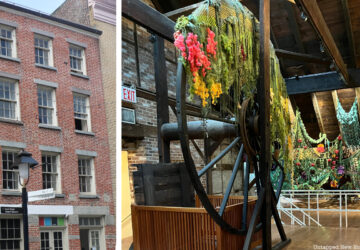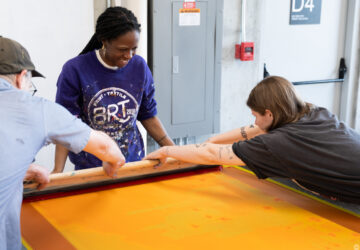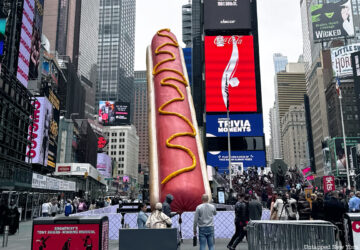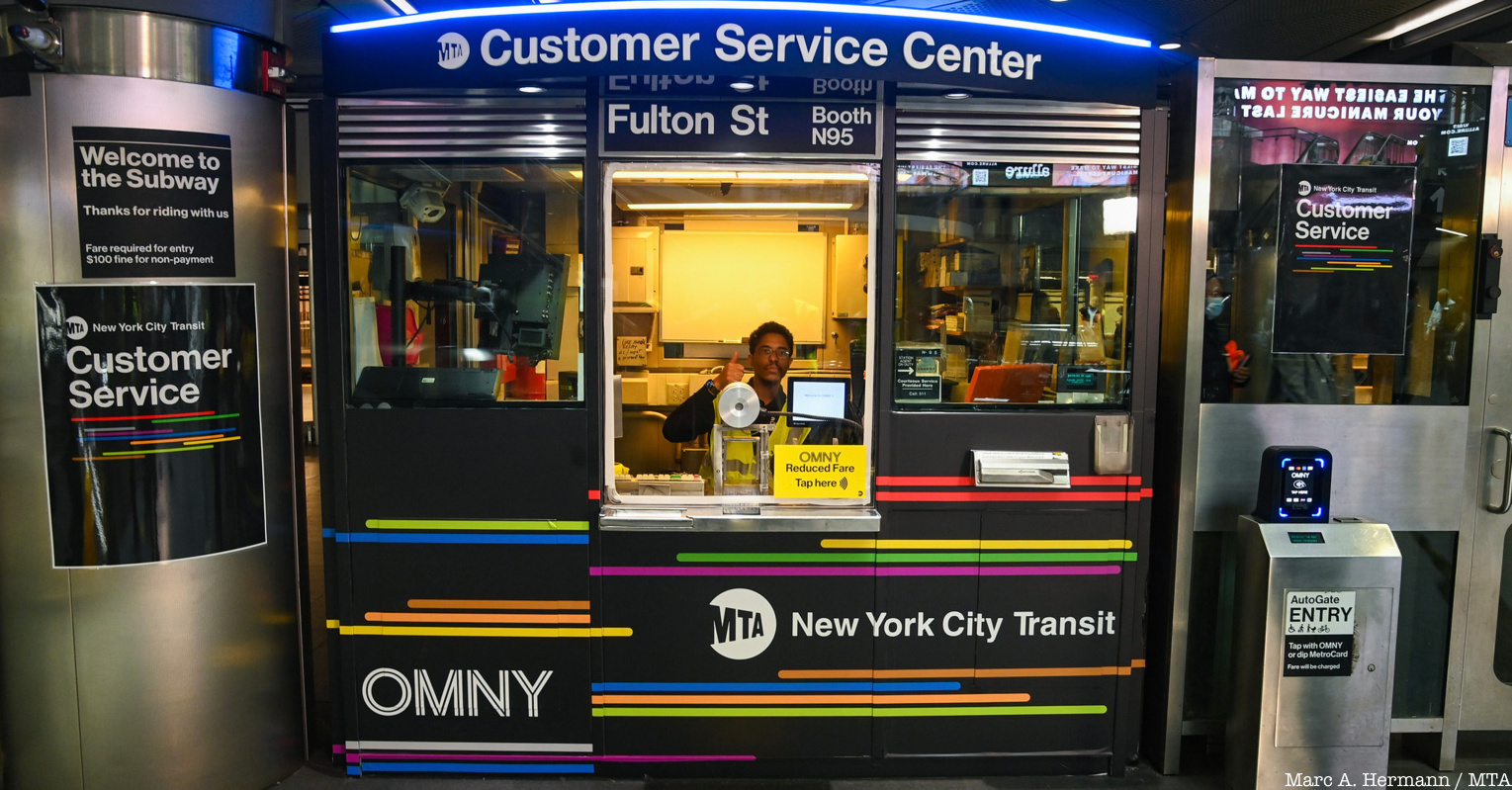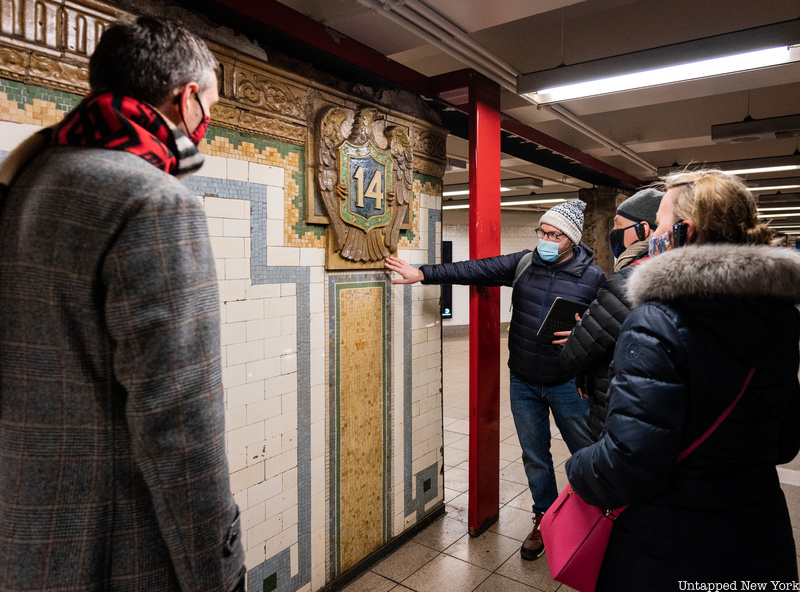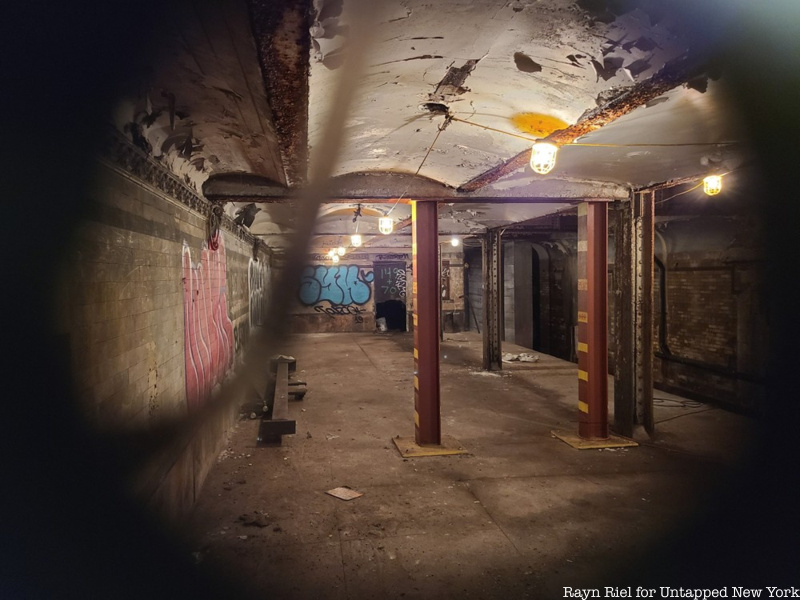Starting today, more than 2,000 subway station agents across the entire subway system will be untethered from their enclosed subway booths as they venture out into the station to interact with riders. This change in the station agent’s role comes as more subway booths are being converted into enhanced Customer Service Centers and MetroCards are being phased out by OMNY. The New York City subway system is constantly evolving, so here, we take a look back at the origins of the subway booth.
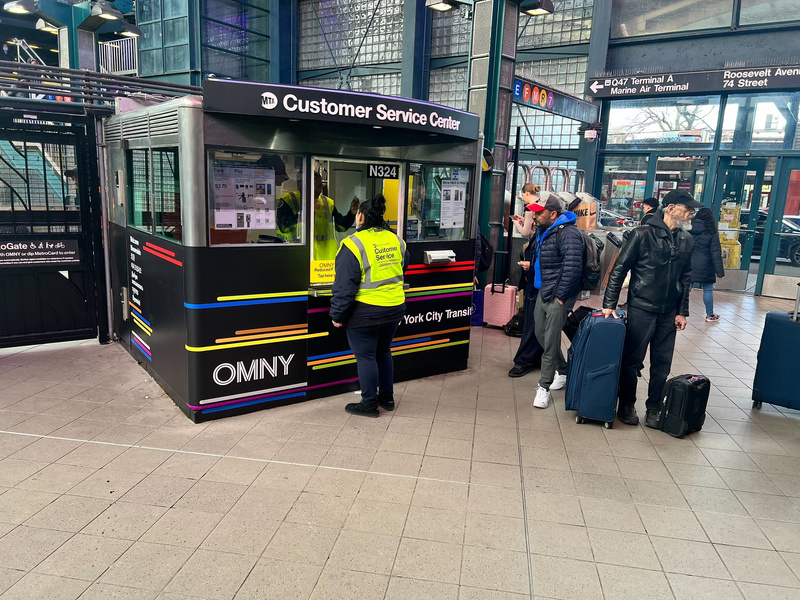
Since the beginning of the subway system in 1904, there have been subway booths of some kind. What has changed with the booths is the method of fare collection received and distributed. In the early days of the subway, riders bought paper tickets to board. You can see the first one at the Museum of the City of New York. Riders would purchase their paper ticket from the booth and then bring the ticket to an attendant who would verify it and then shred it in a ticket chopper.
Remnants of paper ticket booths are hard to come by in today’s stations, but they do exist. Inside the abandoned City Hall Station, on a mezzanine area above the platform, there was once a grand ornamented oak ticket booth. While the structure no longer exists, you can imagine where it would have fit below the tiled arches. At the Times Square/42nd Street subway station, there were once visible outlines of a lost booth and turnstile, but a new floor has covered them up. At the Wall Street subway station, you can still see the remnants of an original wooden ticket booth, while a ticket chopper that was once there has been removed. There is a ticket chopper in the collection of the New York Transit Museum.
There were drawbacks to the paper ticket system. First, the collection was time-consuming and caused crowds. It was also a major inconvenience when a gust of wind from a passing train would make the flimsy piece of paper fly away. To remedy these issues, the subway got rid of paper tickets and switched to a coin-operated turnstile system in 1921. With this new efficient system, straphangers simply had to drop in a nickel to board. In 1948, when the fare rose to 10 cents, they dropped in dimes. The system needed to change again when the fair rose to 15 cents in 1953.
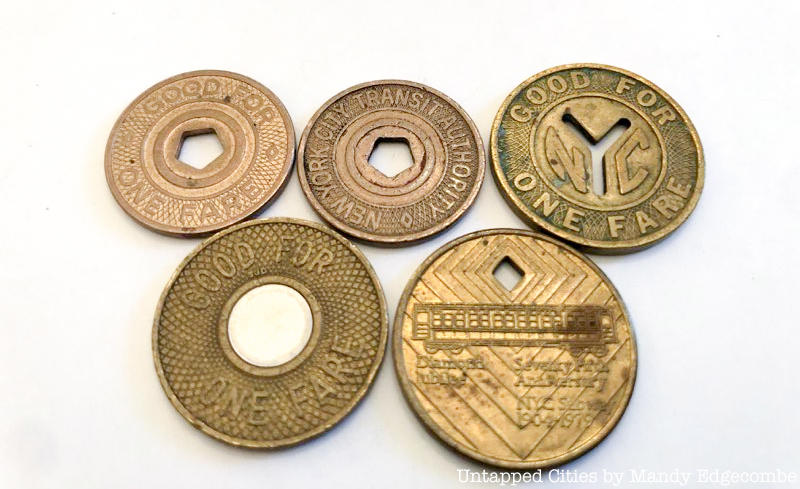
To accommodate the new fare price, the New York City Transit Authority created its own currency system, the subway token. Subway booths were most needed in this era when riders had to exchange cash for the special coins. Subway tokens came in a variety of different designs throughout the decades, and were used all the way up until 2003 when they were officially retired.
The advent of MetroCards in 1994 marked the beginning of the end for subway tokens and in turn subway token booths. Riders no longer had to stop by the booth and make an exchange, they could go right up to a MetroCard machine and help themselves. Subway booths started to be abandoned and removed.
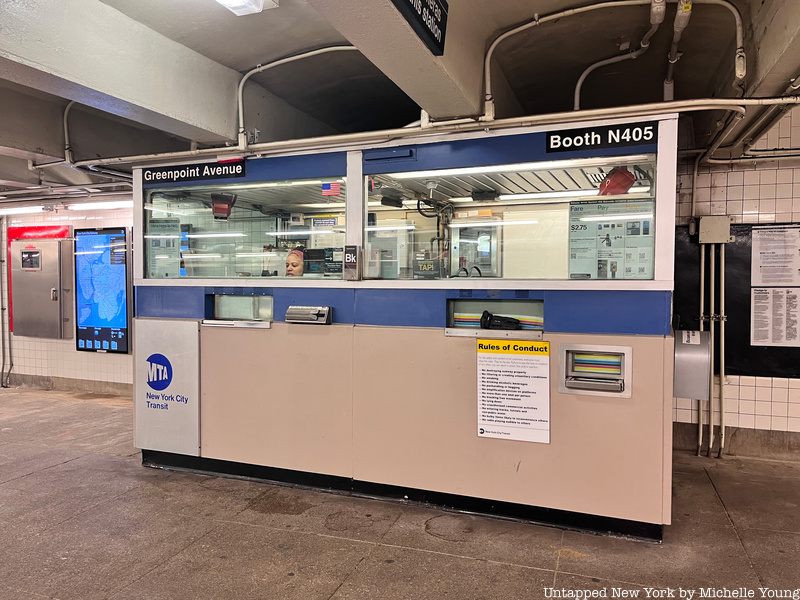
Now, as the MetroCard is replaced by OMNY, station agents who once sat in booths are free to roam around the stations, but the booths aren’t necessarily going away. The physical structures will remain in place for agents to return to on breaks and whenever they deem necessary. Many subway booths will be converted into Customer Service Centers. Currently, there are nine Customer Service Centers open, at least one in each borough, and six more are slated to open by the end of 2023. Those new centers will appear at E 180 St, 125 St, Fordham Rd, Times Square-42 St, Sutphin Blvd-Archer Av-JFK Airport, and 168 St.
The new Customer Service Centers provide services that riders used to only be able to perform at 3 Stone Street in Lower Manhattan, such as applying for Reduced-Fare MetroCards or OMNY. Customer Service Centers, apart from at St George, are staffed by station agents 24/7. This change doesn’t mark the end of the subway booth, but rather the next iteration.
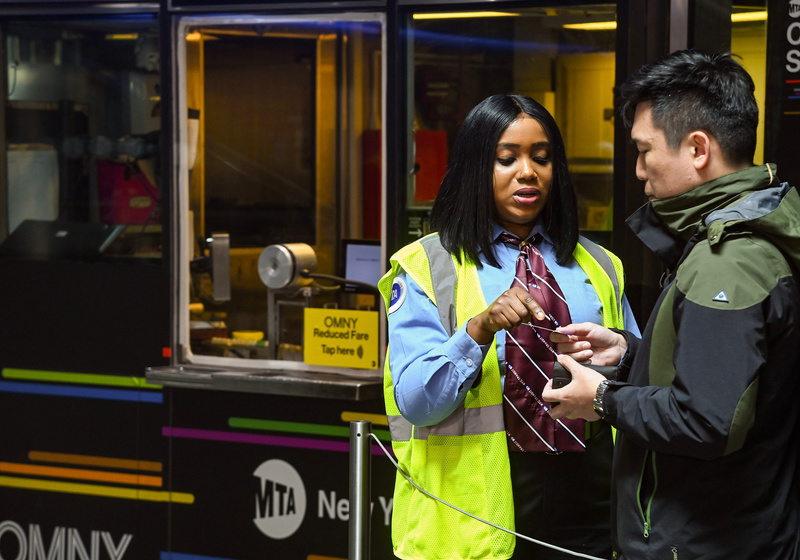
When the agents step out of their subway booths today, it will mark the first time in three years since the start of the COVID-19 pandemic that they will be outside of the booth interacting directly with customers. As they roam around the platforms, mezzanines, and turnstile areas, agents will help answer questions, provide directions, assist at fare machines, and monitor the station’s safety and cleanliness. Agents received training on their new roles and OMNY equipment. Unrestricted by the limited vantage point of the booth, agents will be able to quickly identify and report issues they find.
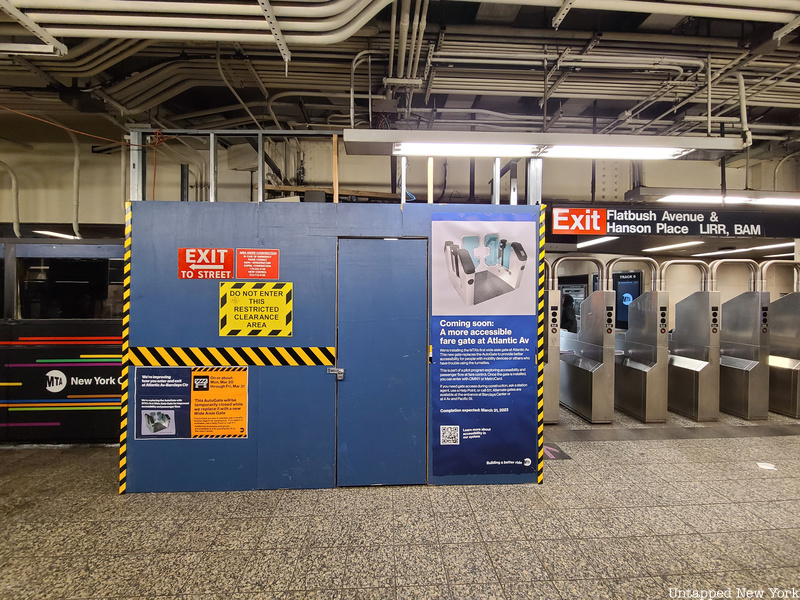
In addition to subway booth changes, modifications are coming to subway cars and turnstiles as well. The photo above shows construction on a new wide gate turnstile being installed at Atlantic Avenue in Brooklyn. It is expected to be unveiled any day. New subway cars are already rolling on the A line, with more to arrive in the coming years. New York City’s nearly 120-year-old subway system and moving into the 21st century.
Next, check out 20 Secrets of the Subway System and 11 Vintage Subway Amenities That Should Come Back
